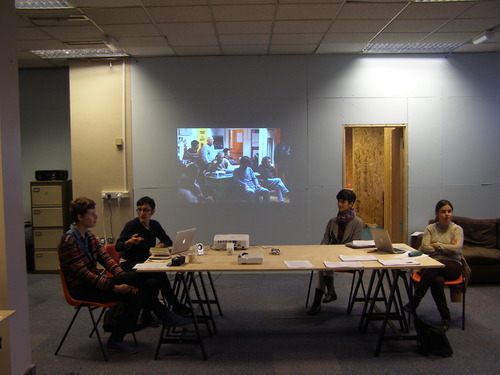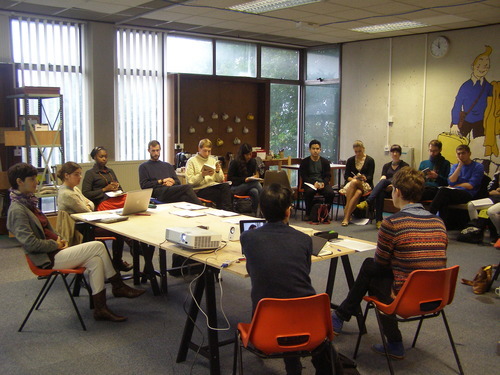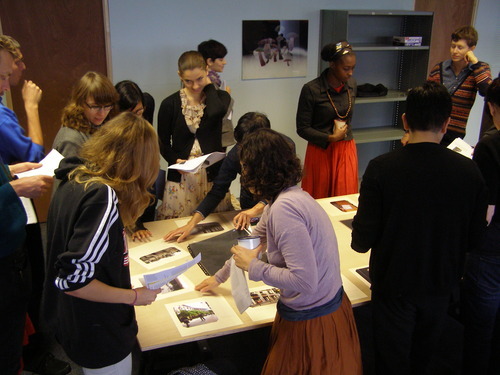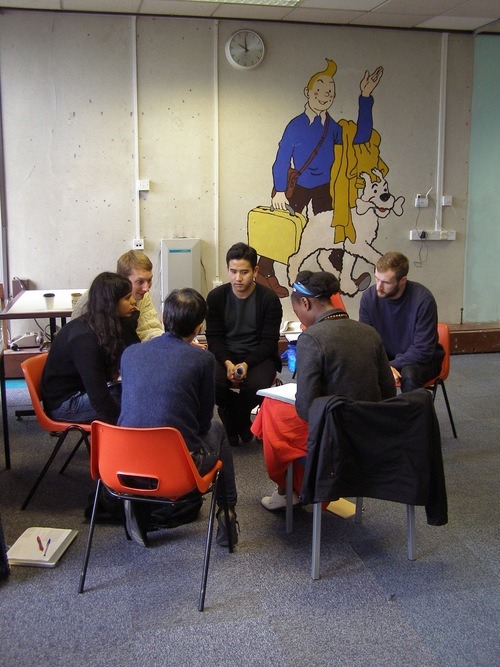18 pictures and 18 stories. An approach to Isidoro Valcárcel Medina’s work.

2011, photo credit: Bulegoa
The session is conceived as a reading and writing workshop that takes as working material the 18 pictures of the series Performance in Resistance by Isidoro Valcárcel Medina and the texts produced within the context of 18 pictures and 18 stories.
18 pictures and 18 stories is a project by Bulegoa z/b in Bilbao, in dialogue with If I Can’t Dance I Don’t Want To Be Part Of Your Revolution in Amsterdam.
In 2010, If I Can’t Dance invited Valcárcel Medina and Bulegoa z/b to take part in Performance in Residence, a programme that studies and researches past performances, from the perspective of current artistic practice. Valcárcel Medina responded to the invitation with Performance in Resistance, 18 photographs that show as many actions carried out by the artist in different cities between 1965 and 1993. The resulting set of images blurs the limits between the lived moment and the document, between what happened and fiction.
Throughout 2012 Performance in Resistance was shown in seven institutions under the umbrella of 18 pictures and 18 stories. Each time, three guests were invited to tell a story on the basis of one of the photographs. As in those previous stages, Valcárcel Medina will be available on the phone to answer any question the audience might want to ask him for the workshop.
The workshop has been convened by Beatriz Cavia, Miren Jaio, Isabel de Naverán and Leire Vergara (Bulegoa z/b).
A book that collects all the stories produced in the tour will be launched on Friday 4 October at Tate Modern where Isidoro Valcárcel Medina will give a lecture.
Isidoro Valcárcel Medina (Murcia, 1937) is an important representative of conceptual art in Spain. His body of work includes performances, sound pieces, architectural projects, installations and books. From his early practice up to the present day, he has asserted a critical attitude towards both art institutions and the art market, developing instead situations and scenarios that allow him to engage in a more directly affective relation with his audience.




all photos by Eva Rowson